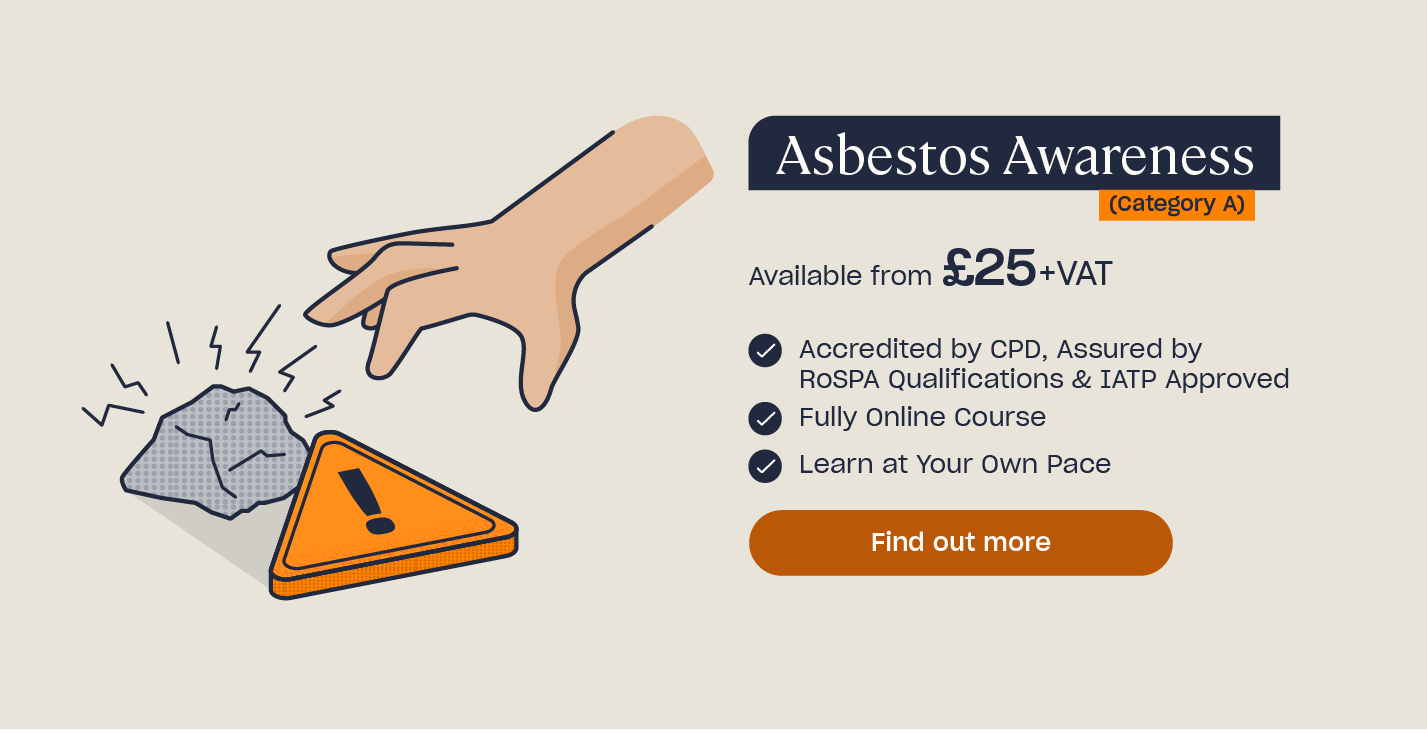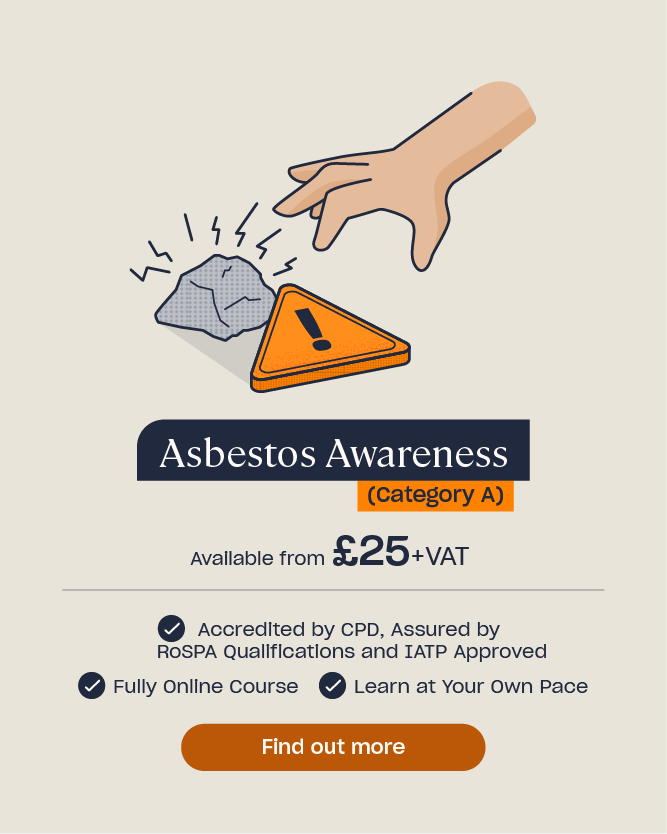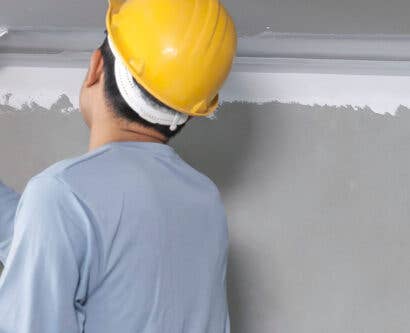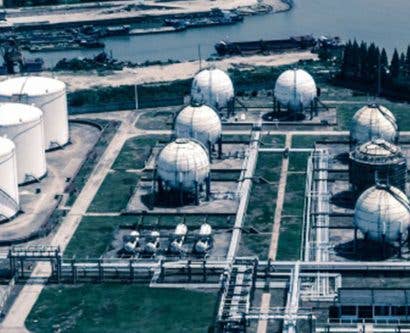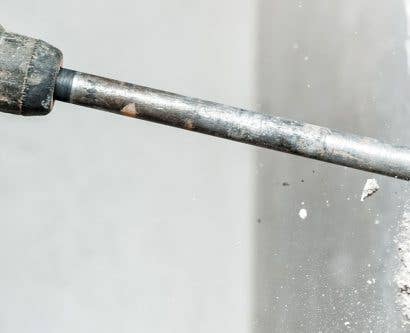Asbestos Colours: What is the Most Dangerous Asbestos Colour?
Asbestos is a naturally-occurring mineral that has been used as a building material for many years due to its strong, heat-resistant, incombustible and sound-absorbent properties. However, it was confirmed that the inhalation of fibres from asbestos-containing materials (ACMs) causes serious health issues, including cancer and, in 1999, asbestos was fully banned as a building material in the UK.
There are six main types of asbestos and they are often characterised by their colours. In this article, we’ll outline each of the asbestos colours that you may encounter in the course of your work, look at which are the most dangerous asbestos colours and explain what they were used for before their use was banned.

What are the Different Types of Asbestos?
There are two main groups of asbestos: amphiboles (dark-coloured asbestos) and serpentines (light-coloured asbestos). Within these groups are six different types of asbestos, known as chrysotile, amosite, crocidolite, actinolite, anthophyllite and tremolite – we’ll look at the colours of each type of asbestos in this article.
Top Tip
The three most common asbestos colours that you’re most likely to come across whilst working are chrysotile (white asbestos), amosite (brown asbestos) and crocidolite (blue asbestos).
Whilst the most common asbestos types have colours associated with their names, it’s important to note that the asbestos-containing material itself is unlikely to appear to be any of these colours. In fact, in the majority of cases, asbestos cannot be distinguished by colour at all, even in its mineral form, and accredited testing must be carried out to ensure that the type of asbestos is correctly identified.
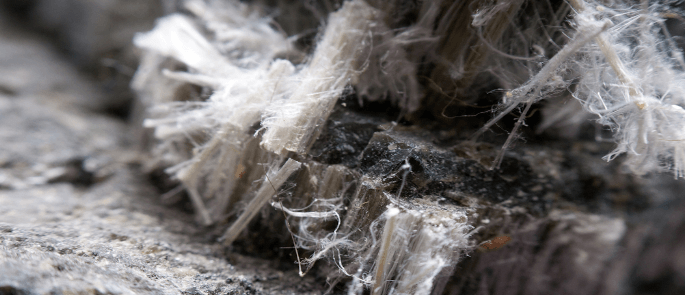
All types and colours of asbestos have the potential to cause significant harm to health if they are disturbed, as is often the case when carrying out any sort of maintenance, building or demolition work on a building built before the ban on asbestos in 1999. If you work in a trade that may disturb ACMs, then it’s important that you’re aware of the symptoms of asbestos exposure and what to do after recent exposure to asbestos, as breathing in air that contains asbestos dust and fibres can lead to asbestos-related diseases.
Looking to Learn More?
Need to know more about asbestos for work? Take a look at our articles on ‘Who Needs Asbestos Awareness Training’ and the ‘Three Types of Asbestos Training’, or visit our Asbestos Awareness Course to update your knowledge.
White Asbestos: Chrysotile
Chrysotile, also known as white asbestos, is the most commonly used form of asbestos. It’s estimated that over 95% of the asbestos used around the world was chrysotile before it was banned as a building material in the UK in 1999. Chrysotile is a serpentine asbestos, meaning that its fibres appear curly.
Chrysotile is called white asbestos because, in mineral form, it appears pale in colour – from grey-white to grey-green. Due to this variance in colour, however, note that the presence of chrysotile cannot be identified simply by its colour and specialist asbestos testing is required in all situations.
Pre-1999, white asbestos was used to make things such as cement, insulation, pipe lagging, roofing materials, gaskets and brake pads.
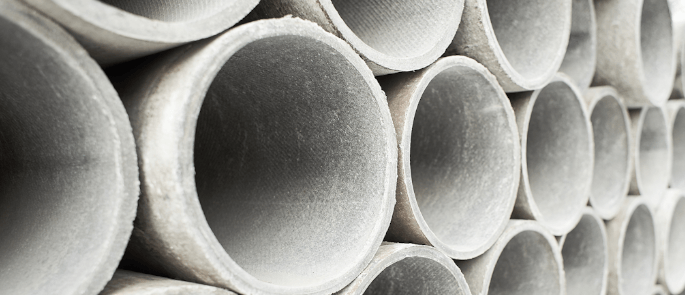
Brown Asbestos: Amosite
Amosite, also known as brown asbestos, is a particularly strong and heat-resistant form of asbestos. Amosite is an amphibole asbestos, meaning that its fibres appear needle-like. Its use was banned in the UK in 1985 because it’s considered one the most dangerous asbestos colours, as its crystalline structure makes it more likely to be inhaled if disturbed.
Amosite is called brown asbestos because, in mineral form, it appears to look brown, though it can also be coloured pale grey or green. Due to this variance, note that the presence of amosite cannot be identified simply by its colour and specialist asbestos testing is required in all situations.
Pre-1985, brown asbestos was used to make things such as cement sheets, insulation (chemical, electrical, thermal and plumbing), fire protection, pipe lagging, tiles and gaskets.
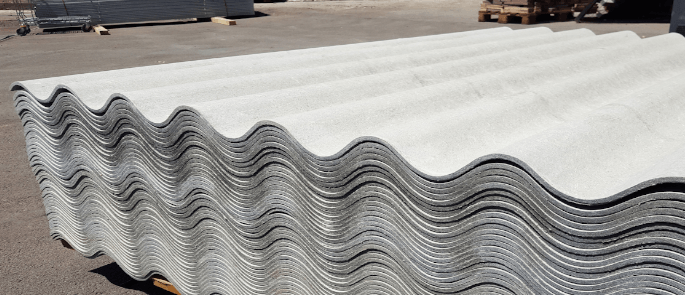
Blue Asbestos: Crocidolite
Crocidolite, also known as blue asbestos and sometimes referred to as riebeckite, is a particularly strong type of amphibole asbestos, meaning that its fibres appear needle-like in structure. Its use was banned in the UK in 1985 due to how dangerous crocidolite can be to inhale if disturbed.
Crocidolite is called blue asbestos because, in mineral form, it appears grey-blue or green-blue in colour. Due to this variance in colour, however, note that the presence of crocidolite cannot be identified simply by its blue colour and specialist asbestos testing is required in all situations.
Pre-1985, blue asbestos was used for insulation boards, spray-on insulation, thermal insulation, fire protection, electrical wires and ceiling tiles.
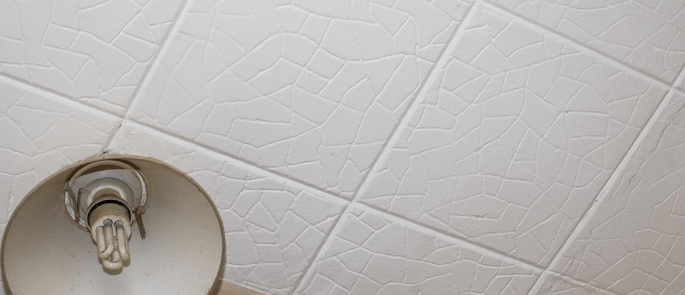
Actinolite Asbestos
Actinolite is a less commonly used form of asbestos. It is a type of amphibole asbestos, meaning that its fibres appear needle-like in structure. Its use was banned in the UK in 1985 due to how dangerous actinolite fibres can be to inhale if disturbed.
Actinolite is a dark-coloured form of asbestos and is generally green, grey-green or green-black in colour. Due to this variance, note that the presence of actinolite cannot be identified simply by its colour and specialist asbestos testing is required in all situations.
Pre-1985, actinolite was used in lightweight forms of insulation, concrete materials, structural fireproofing and many gardening products.
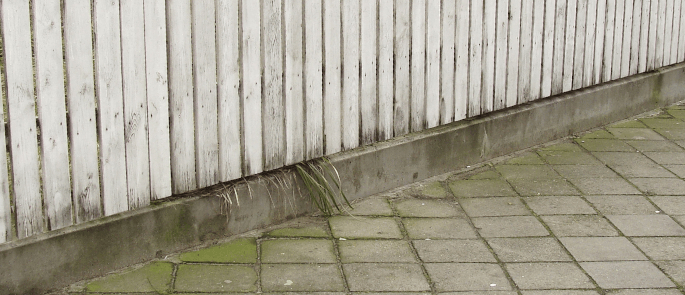
Anthophyllite Asbestos
Anthophyllite is a rare type of asbestos that has a brittle mineral structure. It is a type of amphibole asbestos, meaning it has needle-like fibres that can be dangerous if inhaled. Its use was banned in the UK in 1985 along with all other amphiboles.
Anthophyllite is a dark-coloured form of asbestos and can be brown, grey-brown yellow-brown in colour. Due to this variance, and due to its similarity in appearance to other amphiboles, note that the presence of anthophyllite cannot be identified simply by its colour and specialist asbestos testing is required in all situations.
Pre-1985, anthophyllite was rarely used as a building material, but can sometimes be found in cement products, insulation, flooring and roofing materials.

Tremolite Asbestos
Tremolite is a particularly strong, flexible and heat-resistant form of asbestos that can be spun and woven into cloth. It’s a type of amphibole asbestos, meaning that it has needle-like fibres that are hazardous if disturbed and inhaled. Tremolite is also prevalent in talc, which puts talc miners at particular risk. Its use was banned in the UK in 1985.
Tremolite is a dark-coloured form of asbestos and can appear grey, grey-white or grey-green in colour. Due to this variance, and due to its similarity to other amphiboles, note that the presence of tremolite cannot be identified simply by its colour and specialist asbestos testing is required in all situations.
Pre-1985, tremolite was used in fireproof fabric, paints, sealants, plumbing materials, roofing materials and insulation.

In this article, you’ve learnt about the main asbestos colours and the building materials they were used for before their use was banned in the UK in 1999. We hope that you’ve found the information in this article helpful, but don’t hesitate to get in touch with High Speed Training or take a look at our Asbestos Awareness course if you need to know more.
Further Resources:
- Can You Remove Asbestos Yourself?
- How to Conduct an Asbestos Risk Assessment
- Answering Your Asbestos Awareness Questions
- What is Gypsum in Construction?
- Asbestos Quiz
- What are the Differences between Friable and Non-Friable Asbestos?
